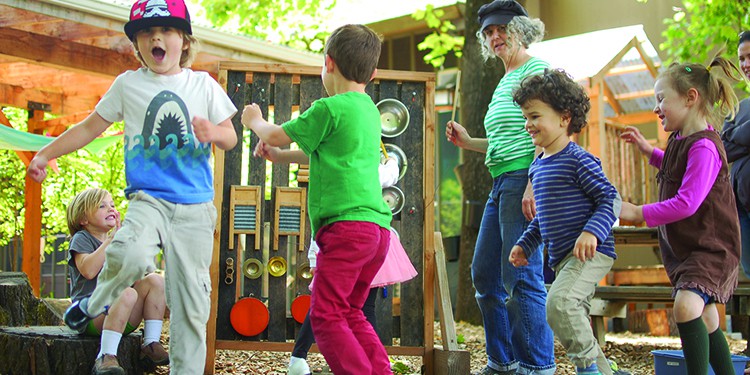
By Ren Johns, Founder of PDX Waitlist
“What are you doing about the fall?” is the question parents are asking each other (and themselves). While reopening plans vary by school district, most involve limited in-person time, requiring families to create a whole new child care and education plan on the fly. Folks with younger kids are also scrambling due to limited options for preschool, closures, and uncertainty about the pandemic.
What I’ve learned from helping families find child care over the past few years is that, while the calculus looks different for everyone, you can’t make a good decision without first understanding what your options are and then also knowing the must-have priorities for your family.
One quick note: As wealthier families race to hire private tutors and nannies, it is clear that this moment is only amplifying existing equity issues in public schools. Additionally, since funding is typically based on enrollment, if thousands of families withdraw from public school this year, there will likely be implications for everyone. As we make choices for our own families, it’s critical that we pause, consider our impact, and ask our elected leaders to make sure a plan is in place to address the needs of all families. For more thinking about this issue, read this post from Integrated Schools.
Your Options
There are many options and lots to say about each, so I’ve created this guide to walk you through several in detail (assembled in partnership with The Goodness Collaborative!). Here are a few highlights, beyond the classic options of public schools, private schools, virtual schools, and child cares (all detailed in the guide!):
- Micro-schools are the hot new thing. These are tiny private schools, often located in a home with a handful of kids. These groups could be facilitated by a teacher or parent volunteers.
- Nanny/tutor shares engage a caregiver to watch up to 3 kids who aren’t from the same family.
- Parent cooperatives (co-ops) are groups of parents who rotate caregiving responsibilities. Technically this should be less than 4 hrs/day.
- Homeschooling means formally withdrawing your child from your local public school to educate your child as you see fit. This is different from distance learning (online assignments/curriculum from your local public school) or virtual school (public charter/private school curriculum that is entirely online).
A note on “care pods:” I have heard people use that term to describe any of the options above + social distancing communities. So keep that in mind as you talk about options with other friends.
Your Priorities
To figure out what makes sense for you, you need to know what you’re looking for. Here is a non-exhaustive list of questions to consider (for more on which options best meet some common priorities, see the guide):
- What is your goal? Limiting the spread of COVID? Child care coverage? Academics?
- What are your needs? How many days, hours and kids?
- What is your budget and/or are you open to a volunteer care swap? The cost of nannies and teachers is in the $20-40/hour range while co-ops can be free.
I wish I had a simple solution for you — “If your kid is in kindergarten, do X!” — but sadly that doesn’t exist right now. Investigate 2-3 options, keep in mind your impact on others, and be prepared for the situation to continue evolving in the fall!

Ren Johns is a mom of two in NE Portland. A former middle school and high school teacher, she now runs PDX Waitlist, helping to connect families looking for child care with great local providers through classes, consulting, and an online application site. If you need more help in your search, you can get in touch at ren@pdxwaitlist.com or find her on Facebook or Instagram.
- 24 Free Things to Do with Kids in May - April 25, 2024
- Mother’s Day Events in Portland - April 25, 2024
- May 2024 Digital Issue - April 23, 2024


